Best iPhones in the UK 2022: The top iPhones you can buy now
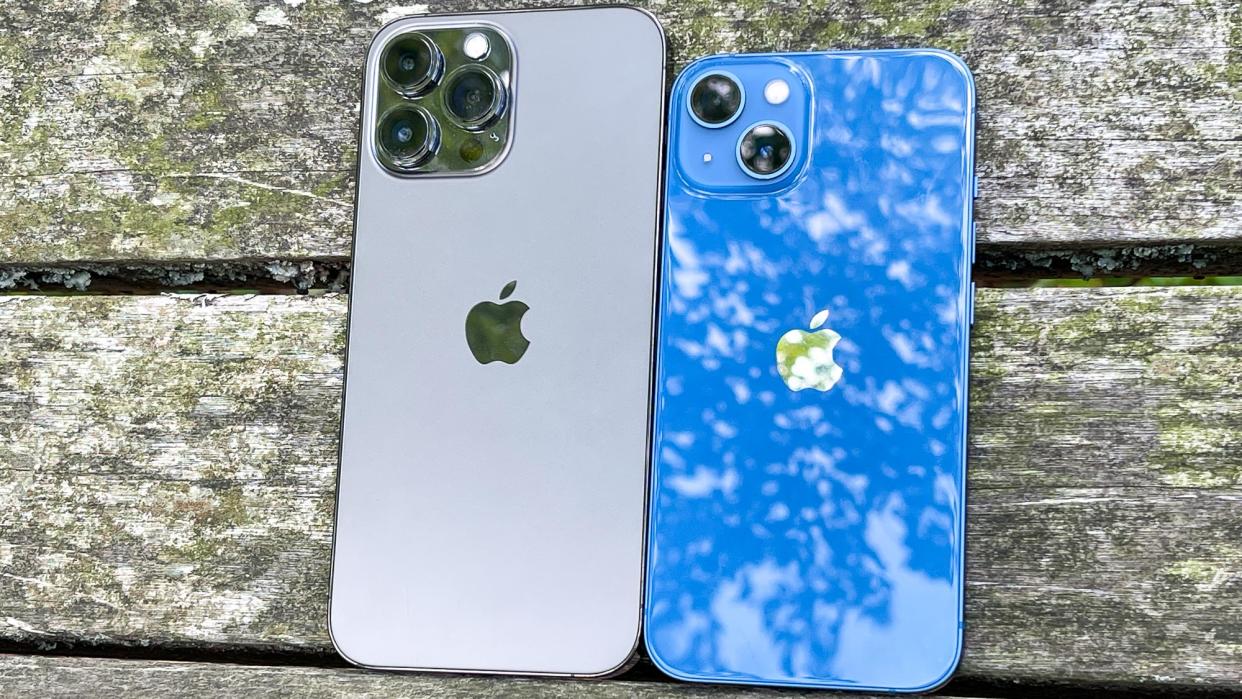
Ain't no phone like the best iPhones, and this list contains all the options you may want to buy if you're looking for one right now.
Apple knows how to make the numerous features within the iPhone accessible to both newcomers and experts, and how to package them attractively, whether they're software or hardware. iPhones are highly desirable (and expensive) as a result, so you'll want to get a handle on the available choices before spending anything.
Apple has just launched the iPhone 14, iPhone 14 Pro and iPhone 14 Pro Max, which have now become our favourite iPhones. We imagine the iPhone 14 Plus will be too, once it launches in October.
Good iPhones aren't just the latest iPhones though. The iPhone 13 series is the best iPhone around, with older models falling in behind them and then the cheapest (but still good) iPhone SE sitting at the bottom if you want the iOS experience for the least money possible.
Take a look at our rankings of all the iPhones currently available to buy new below. And if you get convinced to abandon your current Android phone, be sure to check out our guide on how to transfer contacts and data from Android to iPhone.
What are the best iPhones?
Of all the iPhones currently available, the iPhone 14 Pro Max, is our top pick, with the iPhone 14 Pro just below, offering the best price/features balance of the latest iPhones. The iPhone 14 is in the third-place spot, since while it's the best value of the new iPhones, it didn't change enough from last year to make it a worthwhile upgrade from the iPhone 13.
If the latest iPhones are out of your price range, then you've still got plenty of choices. The iPhone 13, iPhone 13 mini, iPhone 12, and iPhone 12 mini are all still on sale and offer similar capabilities albeit at the expense of likely having a shorter iOS update life, meaning you'll want to update your phone sooner if you want the newest software possible.
Your cheapest option is the newly released iPhone SE 2022. It's more powerful, more efficient and has now got 5G, but it has a very dated chassis with a Touch ID home button. Up to you whether that's a good or bad thing.
All of these iPhones are capable of running the latest software, which is iOS 16. Check out our review to see what the benefits of the new OS are if your current iPhone doesn't support it.
The best iPhones you can buy right now
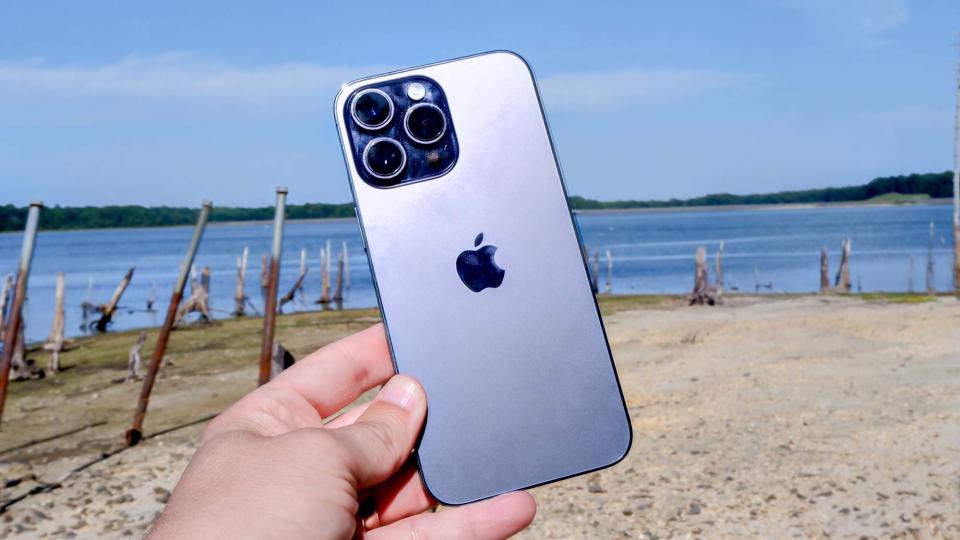
1. iPhone 14 Pro Max
The best iPhone you can buy today
Starting price: £1,199 | Screen size: 6.7-inch OLED (120Hz) | Processor: A16 Bionic | Cameras: 48MP main (ƒ/1.8), 12MP ultrawide (ƒ/2.2) 12MP telephoto (ƒ/2.8) with 3x optical zoom, LiDAR / 12MP front (ƒ/2.2) | RAM/Storage: 6GB/128GB, 256GB, 512GB, 1TB
Best cameras in a phone
Superior performance
Excellent battery life
Improved display with AOD and Dynamic Island
Could use faster charging
More expensive than last year
The iPhone 14 Pro Max is the biggest and best iPhone you can buy today. Its cameras are outstanding, it's more powerful than any Android rival and is one of the longest-lasting phones we've ever tested. It's also finally caught up with some long-time Android features that make it much better rounded than before.
The addition of the Dynamic Island means no more notch, and the upgraded display allows for an always-on display mode for the first time. Also, the main camera's upgrade to a 48MP sensor means even more detail and brightness in your photos.
About the only thing letting down this iPhone is again its charging speed. Apple has some of the slowest charging standards of any mobile device maker around right now at 20W. The other main complaint is that Apple's bumped the price up by £150 since last year, making this one expensive phone. If you can afford it, it's worth it though.
Read our full iPhone 14 Pro Max review.
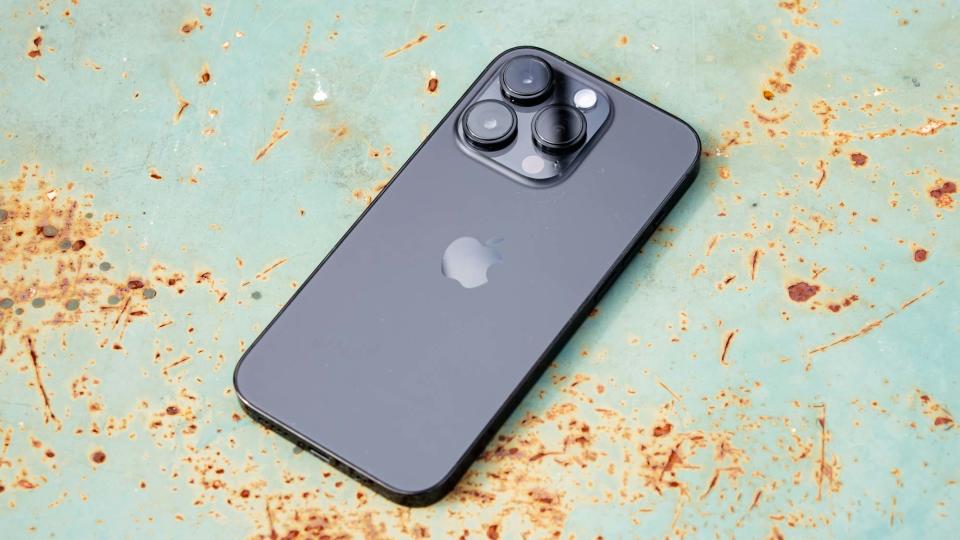
2. iPhone 14 Pro
The best iPhone balance of features, price and size
Starting price: £1,099 | Screen size: 6.1-inch OLED (120Hz) | Processor: A16 Bionic | Cameras: 48MP main (ƒ/1.8), 12MP ultrawide (ƒ/2.2) 12MP telephoto (ƒ/2.8) with 3x optical zoom, LiDAR / 12MP front (ƒ/2.2) | RAM/Storage: 6GB/128GB, 256GB, 512GB, 1TB
New display with AOD and Dynamic Island
Improved 48MP photography
Strong performance from A16 chipset
Fast charging limited to 20W
More expensive than before
The iPhone 14 Pro is the model to go for if you want almost the same performance as the iPhone 14 Pro Max at the top of the best iPhones list but prefer something slightly cheaper or more compact.
The iPhone 14 Pro features the same 48MP main/ 12MP ultrawide/ 12MP 3x telephoto camera combination as well as the 120Hz display with always-on capabilities and the Dynamic Island that the Pro Max has — all of the best parts of the phone. The only real area you may notice a difference between the Pro models in is battery life, but it shouldn't impact your usage that much since Apple's A16 chip provides great power efficiency as well as computing oomph when needed.
Again, watch out for how slow the battery charges even at the 20W maximum speed. Charging iPhones is still best left for overnight rather than a quick 20-minute top-up. But if you don't mind that, or the £150 extra you have to pay for this over the iPhone 13 Pro, it's likely the best Pro model for most users, and for anyone wanting the most substantial iPhone upgrade for their money.
Read our full iPhone 14 Pro review.
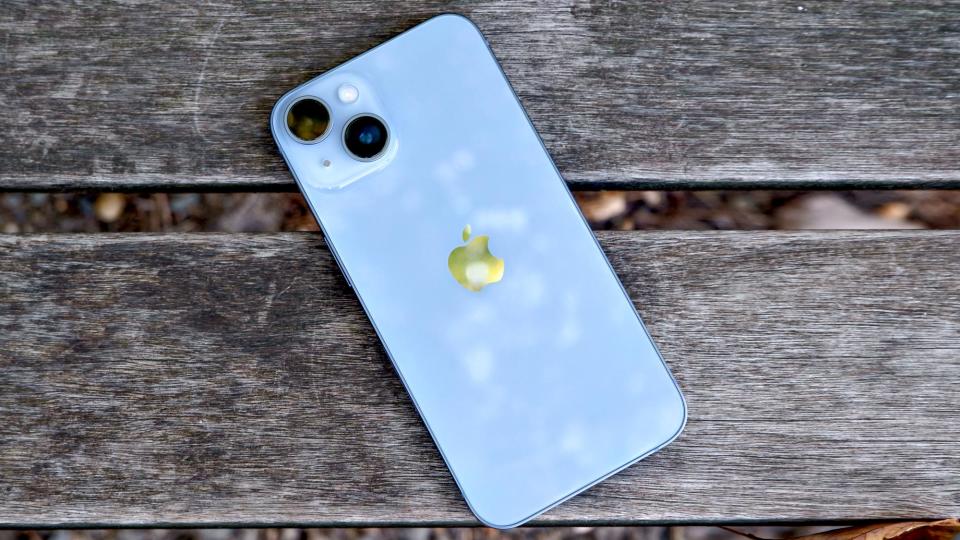
2. iPhone 14
The best iPhone for most people
Starting price: £849 | Screen size: 6.1-inch OLED (60Hz) | Processor: A15 Bionic | Cameras: 12MP wide (ƒ/1.5), 12MP ultrawide (ƒ/2.4) / 12MP front (ƒ/2.2) | RAM/Storage: 6GB/128GB, 256GB, 512GB
Brighter display
Great cameras with added Action Mode
Improved performance
Lacks 120Hz display
No zoom camera
More expensive
The basic iPhone 14 hasn't changed that much from last year, but it still offers the cheapest way to get onto the new iPhone ladder, and that's good if you're in dire need of an upgrade but not enough cash to buy a Pro model.
The iPhone 14 steps up from the iPhone 13 before it by improving its cameras, including a brighter main sensor, Action Mode videography and Photonic Engine-enhanced low-light shots. It also uses an improved A15 chipset for slightly better performance, which still beats any Android phone you could name.
However, with a 60Hz display, no telephoto camera and a £70 price jump, there are reasons to avoid this phone. If you want all the latest tech, see if you can stretch to a Pro phone. Otherwise, this remains a well-rounded device that will suit the average user in search of a new iPhone.
Read our full iPhone 14 review.
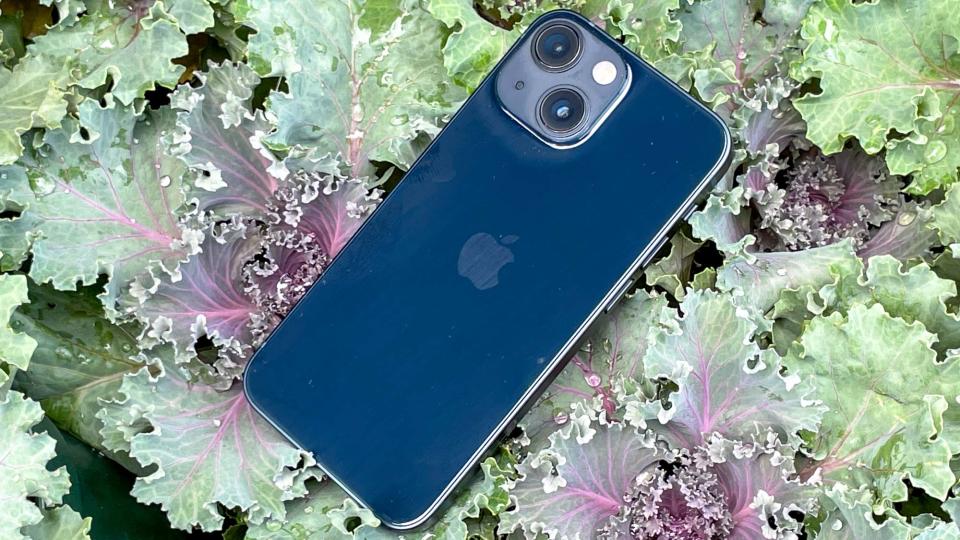
4. iPhone 13 mini
The best small iPhone
Starting price: £679 | Screen size: 5.4-inch OLED (2340 x 1080) | Processor: A15 Bionic | Cameras: 12MP wide (ƒ/1.6), 12MP ultrawide (ƒ/2.4) / 12MP front (ƒ/2.2) | RAM/Storage: 4GB/64GB, 128GB, 256GB
Improved cameras
Better battery life
Identical performance to larger iPhone 13
No 120Hz refresh rate
Fast charging limited to 20W
If you like your phones small, then the iPhone 13 mini offers you that plus basically everything else that makes the iPhone 13 series great. At 5.4 inches, you'll struggle to find a smaller phone with a better display, chipset or cameras.
In essence, this is a miniaturized version of the base iPhone 13, only with a smaller display and battery. That does mean you won't get a 120Hz display or a telephoto camera, since the iPhone 13 lacks those features, too.
Battery life was the biggest problem with the iPhone 12 mini last year, and the good news is it's better on the iPhone 13 mini, though it's still below average. Even with that caveat, the unique size of the iPhone 13 mini might be enough to convince you it's right for above all the other recent iPhones.
Read our full iPhone 13 mini review.
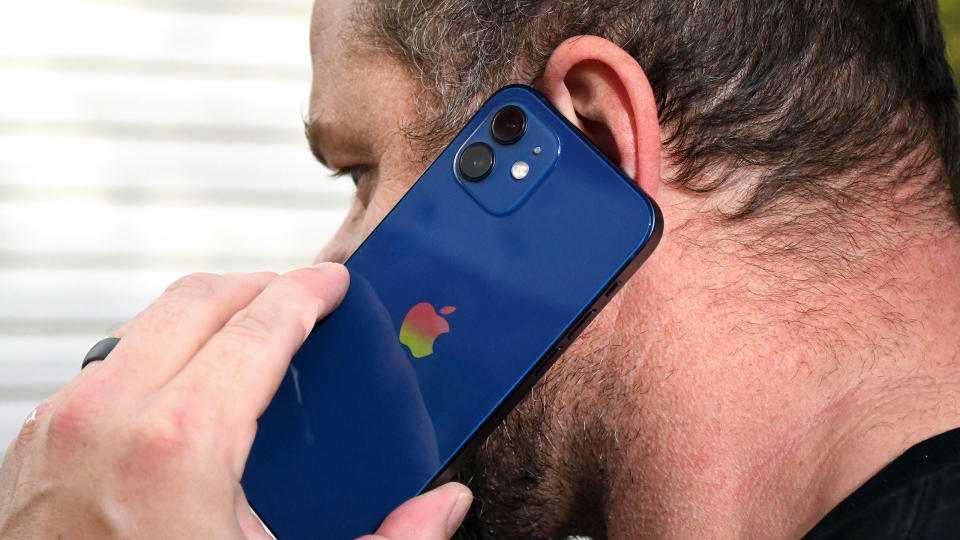
5. iPhone 12
The best cheaper iPhone
Starting price: £679 | Screen size: 6.1-inch OLED (2532 x 1170) | Processor: A14 Bionic | Cameras: 12MP wide (ƒ/1.6), 16MP ultrawide (ƒ/2.4) rear / 12MP front (ƒ/2.2) | RAM/Storage: 4GB/64GB, 128GB, 256GB
Attractive design
Impressive cameras
Powerful, 5G chip
Only 64GB of storage in base model
No 120Hz refresh rate
Although the iPhone 13 has superseded it, the iPhone 12 is on sale at a reduced price and still makes for a great phone. This model introduced 5G compatibility and the current flat-edged design that helps the iPhone stand out from the curvier Android competition.
The 6.1-inch OLED display, combined with the still powerful A14 Bionic chipset makes the iPhone 12 a great phone for enjoying all types of apps and games. Meanwhile on the back, the dual main and ultrawide cameras are capable of high-quality photos, including night mode and portrait mode shots.
There are two issues you should know about when buying this model, though. First off, the basic iPhone 12 comes with a paltry 64GB of storage, likely not enough for all your apps and photos if you don't back them up to a cloud storage service. Also, the display lacks a high refresh rate option, meaning you're stuck with the aging 60Hz standard. But if your priority is a relatively new, well-priced and capable phone, you should still be happy with the iPhone 12.
Read our full iPhone 12 review.
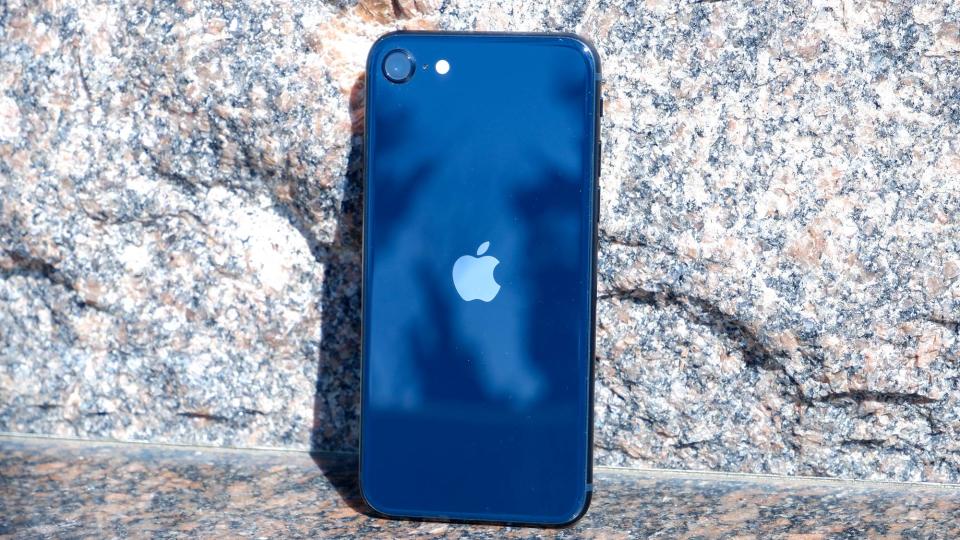
6. iPhone SE 2022
The best iPhone for limited budgets
Starting price: £419 | Screen size: 4.7-inch Retina HD (1334 x 750) | Processor: A15 Bionic | Cameras: 12MP (f/1.8)/12MP front (f/2.2) | RAM/Storage: 4GB/64GB, 128GB, 256GB
More powerful than all rivals
Stronger materials than previous generation
Compact design with Touch ID
Small display even for size
No Night mode photography
The new iPhone SE 2022 is here, and while it's not changed much from the last generation, it remains the best iPhone deal.
Beneath the old-fashioned frame, you have the same A15 chipset you have in the iPhone 13 series. That means you get, by a huge margin, the best performance of any phone in its price category. Keeping Touch ID and the bezels means you don't get a lot of screen space for a modern phone, but perhaps that's preferable to having Face ID. Plus this is still a tiny phone, making it easily pocketable.
Keep in mind that this phone only has one camera on its back, rather than the usual two or three most phones now have. This single camera can take good photos, but if you want a wider shot, a crisp zoom shot, or a low-light mode, you're out of luck.
Read our full iPhone SE 2022 review.
How to choose the best iPhone for you
The first thing you need to consider when picking one of these iPhones is the size you need. The smallest iPhones are the iPhone SE and the mini models of the iPhone 12/13, although they have different-sized displays (4.7 inches and 5.4 inches respectively).
Next up is the 6.1-inch gang, consisting of the iPhone 11, iPhone 12, iPhone 12 Pro, iPhone 13 and iPhone 13 Pro. Note that the iPhone 11 has curved sides, whereas the iPhone 12 and iPhone 13 models have flat ones.
Lastly are the two largest 6.7-inch models, the iPhone 12 Pro Max and the iPhone 13 Pro Max. Consider which size is most comfortable for your hands and pockets, but also how they impact display quality and battery size.
All current iPhones with the exception fo the iPhone SE use Face ID to unlock the phone. That has been tricky in an era where we're encouraged to wear masks, but iOS 15.4 and its mask-ready Face ID update should help with that.
The third thing to consider when shopping for the best iPhone is weighing up whether it's better to save money by buying an older iPhone, or get a longer life out of your phone by buying a newer one. While Apple supports the iPhone for longer with software updates than Android companies typically do — often for five years or longer — you're going to hit the end of those full updates sooner if you buy a phone that was first put on sale several years ago. You'll have to take into consideration when you might replace your phone, and then decide if that makes it worth going without a year or two of big iOS updates to save a few hundred pounds.
How we test iPhones
As with any smartphone we test at Tom's Guide, we evaluate iPhones for days in real-world use cases. We also benchmark Apple's phones using a gamut of performance-measuring apps that allow us to compare iPhone performance to what Android devices are capable of. In addition to synthetic benchmarks, we also run real-world tests, including a video transcoding test in Adobe Premiere Rush that compares the iPhone's processing speed with other devices.
In our lab, we use a light meter to ascertain display quality data, like brightness and color accuracy to help us evaluate the display of the best iPhones. Our proprietary battery test determines longevity on a charge by endlessly streaming webpages over 4G and 5G networks; we then recharge the iPhones to see how quickly they charge in 15-minute intervals.
To compare cameras, we take any iPhone we review out and shoot photos in a variety of settings. We also bring along a comparable smartphone to see how the iPhone's photographic output measures up.
We explore Apple's iOS improvements, test gaming performance and evaluate the phone's speakers — and each of these factors play a part in our final verdict.

